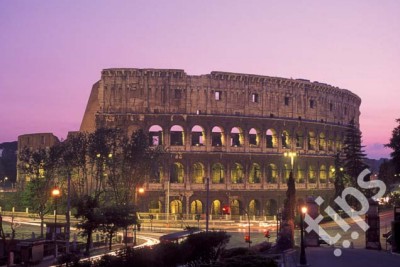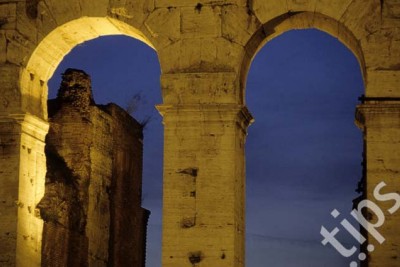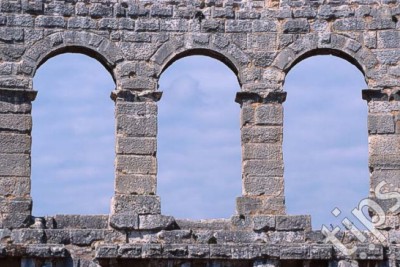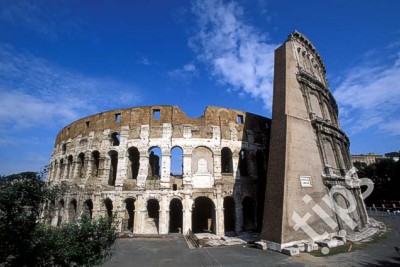When the Colosseum falls, Rome shall fall; when Rome falls, so falls the world.
This epigram written by the Venerable Bede, an english monk of the 7th century, celebrates the admiration of the medieval world for the building that is still today considered the symbol of the Roman empire.
The name Colosseum circulated in the Middle Ages, but the original name is Amphitheatrum Flavium, because it was constructed by the Emperor Vespasian, of the Flavian dynasty, in the year 72; it was inaugurated by the Emperor Titus, with lavish games which lasted for more than a hundred days, perhaps partially in an attempt to appease the Roman public and the gods, after months of disasters – including the eruption of Vesuvius, a fire in Rome, and an outbreak of plague. It has an elliptic shape and is 52 meters high, it could contain until 50.000 spectators, that came in through 76 gates: the places were divided according to the social classes and there was a special box for the Emperor.
Today it is one of the places most visited of Rome: the open space before the building, from where you can enjoy a view of the whole amphitheater, of the nearby Imperial Fora and of the Arch of Constantine (a real museum of official roman sculpture and extraordinary for its wealth and importance), is always crowded of tourists, stalls that sell souvenirs and fake gladiators, with who you can take a photo.
You can visit also the inside: can be seen the stairs where seated the spectators, while in the arena you see the premises that were covered by a wooden pavement on which sand was usually thrown, in order to absorb the blood.
Those who now visit the Colosseum cannot be astonished by the impressiveness of this building, that survived bad weather, earthquakes, fires and pillages for nearly two millenia.
|
Images Rome






... more images of Rome
|



